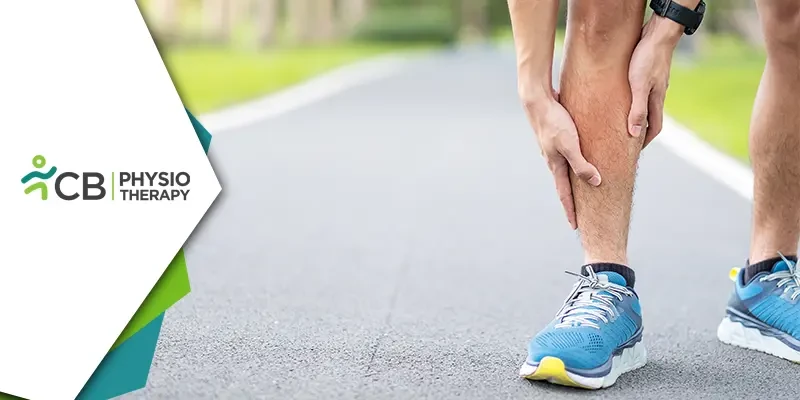Lower extremity overuse injuries are a common concern for individuals across various age groups and activity levels. Whether it's runners logging miles, athletes pushing their limits, or individuals engaging in daily activities, the repetitive stress on the hips, knees, ankles, and feet can lead to debilitating conditions if not addressed proactively. Fortunately, physiotherapy offers effective strategies to prevent and manage lower extremity overuse injuries, promoting optimal biomechanics, strength, and mobility. This blog explores the importance of physiotherapy in preventing lower extremity overuse injuries and highlights key interventions to maintain musculoskeletal health and prevent injury.
Understanding Lower Extremity Overuse Injuries
Before diving into prevention strategies, it's essential to understand the nature of lower extremity overuse injuries. These injuries result from repetitive movements, poor biomechanics, muscle imbalances, inadequate recovery, and improper footwear. Common conditions include:Runner's Knee (Patellofemoral Pain Syndrome): Characterized by pain around or behind the kneecap, often aggravated by activities such as running, squatting, or climbing stairs.
Shin Splints (Medial Tibial Stress Syndrome): Pain along the inner edge of the shinbone, resulting from repetitive stress on the muscles and tendons surrounding the tibia, commonly seen in runners and athletes engaging in high-impact activities.
Achilles Tendonitis: Inflammation of the Achilles tendon, causing pain and stiffness in the back of the heel, typically associated with overuse, tight calf muscles, and improper footwear.
Plantar Fasciitis: Inflammation of the plantar fascia, a thick band of tissue that connects the heel to the toes, leading to heel pain and stiffness, often exacerbated by prolonged standing or walking.
Role of Physiotherapy in Prevention
Physiotherapy plays a vital role in preventing lower extremity overuse injuries by addressing contributing factors, improving biomechanics, and implementing targeted interventions to enhance strength, flexibility, and mobility.1: Biomechanical Assessment
A comprehensive biomechanical assessment allows physiotherapists to identify gait abnormalities, muscle imbalances, and movement dysfunctions that may predispose individuals to lower extremity overuse injuries. By analyzing walking and running patterns, foot mechanics, and joint alignment, targeted interventions can be tailored to address specific biomechanical issues and prevent injury.
2: Footwear Evaluation and Prescription
Proper footwear is essential in preventing lower extremity overuse injuries by providing adequate support, cushioning, and stability during physical activities. Physiotherapists assess individuals' footwear and may recommend appropriate shoe types based on foot structure, gait analysis, and activity level. Custom orthotics or shoe inserts may also be prescribed to address specific foot mechanics and reduce stress on the lower extremities.
3: Strength and Conditioning Program
A structured strength and conditioning program focusing on the muscles surrounding the hips, knees, ankles, and feet can help prevent lower extremity overuse injuries. Physiotherapists prescribe exercises targeting muscle imbalances, weaknesses, and asymmetries to improve joint stability, proprioception, and movement control. Emphasis is placed on strengthening the glutes, quadriceps, hamstrings, calves, and intrinsic foot muscles to optimize lower extremity biomechanics and reduce the risk of injury.
4: Flexibility and Mobility Training
Maintaining adequate flexibility and mobility is crucial in preventing lower extremity overuse injuries by reducing muscle tightness, improving joint range of motion, and enhancing movement efficiency. Physiotherapists prescribe stretching exercises targeting tight muscles and fascia, particularly the calves, hamstrings, hip flexors, and IT band, to alleviate tension and prevent imbalances that may contribute to injury.
5: Proprioceptive and Balance Exercises
Proprioceptive and balance exercises are essential for improving neuromuscular control, coordination, and proprioception, reducing the risk of falls and lower extremity injuries. Physiotherapists incorporate balance pads, wobble boards, and proprioceptive drills into rehabilitation programs to challenge stability and enhance joint proprioception, particularly in individuals recovering from previous injuries or those at risk of falls.
6: Running and Movement Analysis
For individuals engaged in running or sports activities, a thorough analysis of running and movement mechanics is essential in identifying biomechanical inefficiencies and risk factors for injury, allowing for targeted interventions to improve running efficiency and reduce the risk of overuse injuries.
7: Education and Injury Prevention Strategies
Education plays a crucial role in preventing lower extremity overuse injuries by empowering individuals with knowledge about injury prevention strategies, proper warm-up and cool-down techniques, and the importance of gradual progression in training. Physiotherapists educate individuals on the importance of listening to their bodies, recognizing early signs of injury, and implementing appropriate rest and recovery strategies to prevent overuse injuries and optimize performance.
Physiotherapy plays a pivotal role in preventing lower extremity overuse injuries by addressing biomechanical issues, improving strength, flexibility, and mobility, and implementing targeted interventions to optimize movement mechanics and reduce the risk of injury. Through a combination of biomechanical assessment, strength and conditioning programs, flexibility training, and education, individuals can proactively maintain musculoskeletal health, prevent overuse injuries, and enjoy optimal performance in daily activities and sports. By incorporating physiotherapy into routine healthcare practices, individuals can mitigate the risk of lower extremity overuse injuries and enhance their overall well-being and quality of life.

